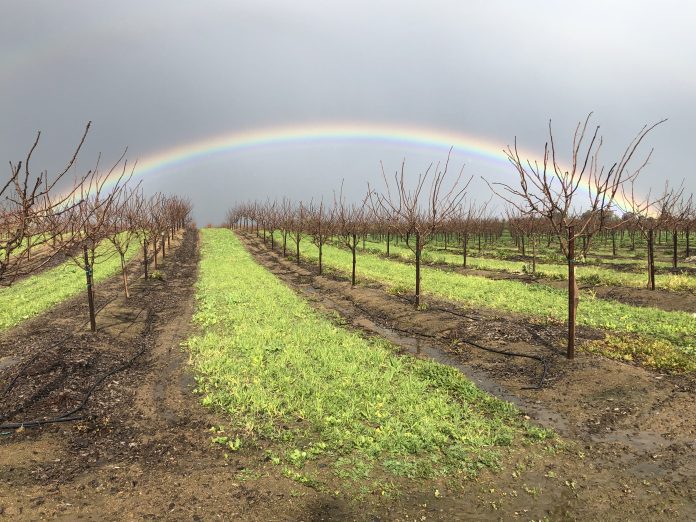
We need rain; obviously for multiple reasons, but we need some love. In a state where we are storing more for a fish that doesn’t exist anymore, but not bringing surface water to our farms while “the experts” complain that our aquifers are drying up, we need rain. In September, we had more water stored behind Shasta than during September of the drought of 2015, but our deliveries were cut to nothing for our food growers. So, what do we do if it doesn’t rain? We have to have a plan.
First Consider Salts
We are always chasing the silver bullet to offset sodium uptake in our trees. When we speak of salt, growers are usually referring to sodium. We have to remember that almost all fertilizers are salts. What is more important is the salinity index of those salts. In terms those of us without chemistry-based brains can comprehend, this refers to a salt’s ability to burn our crops. What we don’t talk about is the fact that although large amounts of those fertilizers have a high probability to burn our crops, those nutrients are absorbed easily. And there are two sides to the chemical formula. Two of the worst culprits are chloride and borate derivatives. We are seeing a high level of chloride burns in our crops this year. And I contest that it is affecting yields considerably.
As our ECs (soil’s ability to conduct electricity) go up, the soil pulls harder and harder on the water it receives. That makes our crops work harder to get enough water for optimal yields. The roots have a much harder time getting water to move to the feeder roots, and in turn, the beneficial nutrients have to fight with the detrimental nutrients that are more abundant in our water. If you look at your solubility section of your soil reports, you’ll see the milliequivalents per liter of cations and anions that a soil paste extract releases. Those numbers, compared to the atomic weights of each ion will tell you more about what percentage the roots are being bathed in. This to me is just as important if not more important than the base saturation of the soil after an ammonium acetate extraction. If we can affect the cleansing and adjustment of this percentage. we can make a difference to what our trees take up early in the season.
Pre-Wet the Soil
Here’s my proposal: As rain is forecasted, let’s pre-wet the soil. Rainwater is more acidic than most well water and lacks all the detrimental ions well water delivers. Many of the detrimental ions like sodium are very soluble. Pre-wetting will solubilize these ions. Rainwater can then leach it out. If we are amending our soils with calcium, potassium, sulfur or compost, we have a better potential to get it into the soil. If we can, we need to lightly incorporate those amendments to keep them in the soil and not erode. Wind and volatility can greatly weather and erode the nutrients we spent good money on, taking them off your farm. If we can irrigate our fields with a low-pH treated water, it will be even better. If you have an acid system, sulfur burners or inject acidifying treatments to your system and fertigate with that water, you can enhance the effects of cleaning up the soil even more.
Most of us won’t stop praying for rain even after it starts coming. We need some help for sure, but prior planning will help make any we get more efficient. Cleaning up our soils will allow us to fertigate the beneficial nutrients to our root zones next spring and increase the percentages of those nutrients compared to the detrimental ions and get more of the good stuff into our trees. We can’t control how much rain we get, but we can control how much more effective it is at cleaning up our soils.










